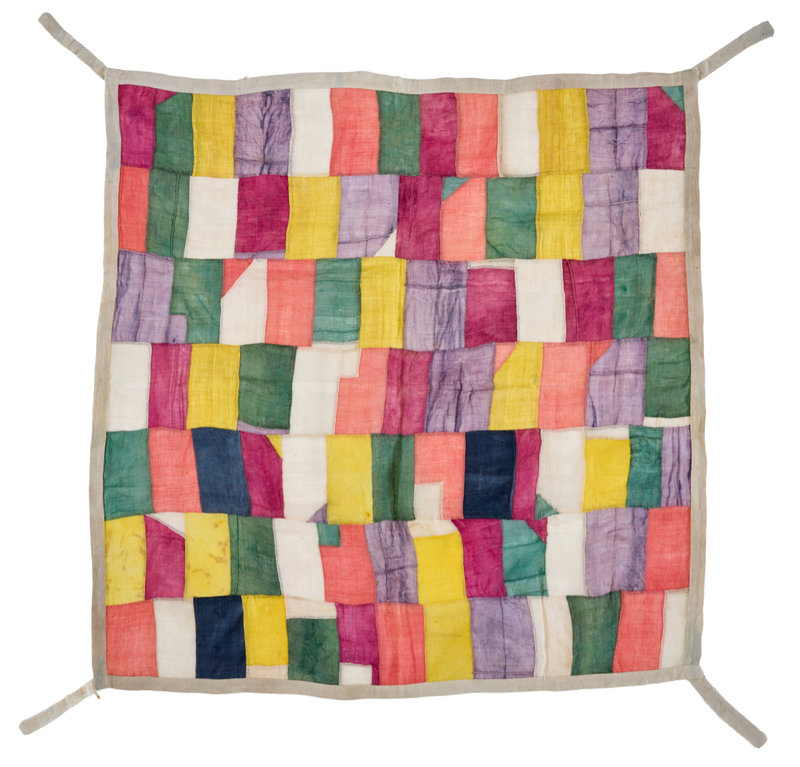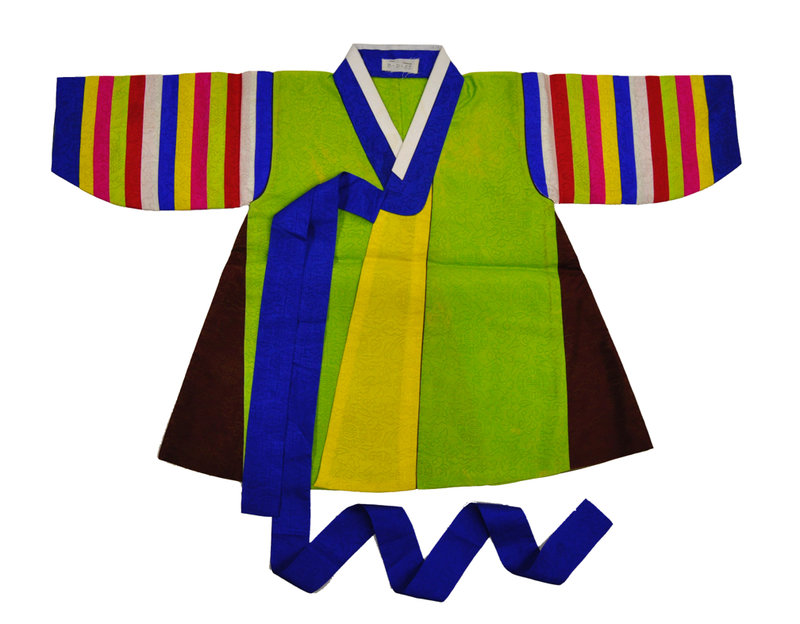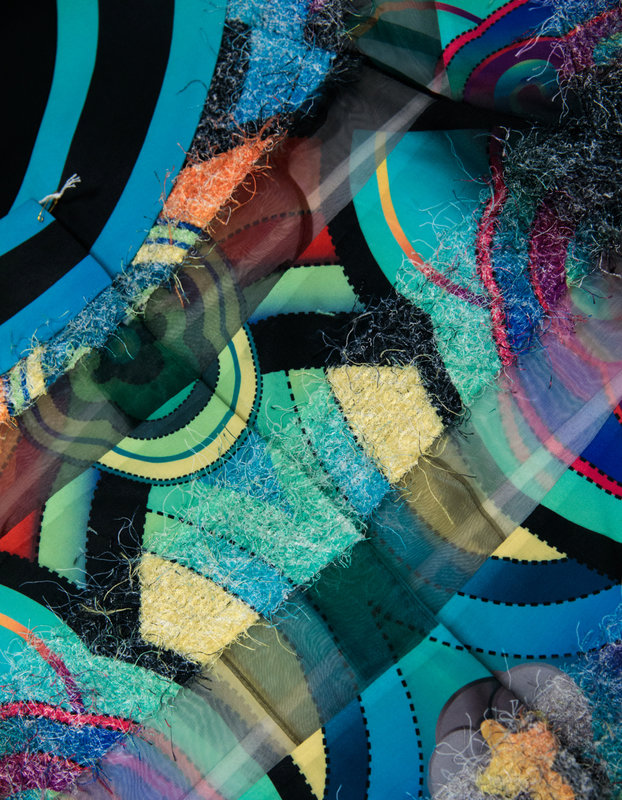"Korean Fashion: From Royal Court to Runway" Offers Full Spectrum of Fashion Through December 22 at The Textile Museum
WASHINGTON, DC.- As the first exhibition in the United States to offer the full spectrum of fashion from Korea's last royal dynasty to today's Hallyu (Korean wave), Korean Fashion: From Royal Court to Runway has been attracting a wide range of visitors since it opened on August 20 at The George Washington University Museum and The Textile Museum in Washington, D.C.
Lee Talbot, the museum's curator who organized the exhibition, is not surprised: "In recent years, South Korea has experienced an extraordinary outpouring of innovation and imagination in fashion, music, cinema, and other arts. Contemporary South Korean artists and designers have deftly combined the historical and avant-garde, local and cosmopolitan, high culture and popular to create a distinctive and widely acclaimed Korean voice on the world’s creative stage."
Bridal robe, Korea, 19th century. © The Field Museum, Image No. A113982c, Cat. No. 33159. Gift of J. F. G. Umlauff, H. Higenbotham. Photo by John Weinstein
In this so-called Hallyu, Korea’s venerable cultural heritage often serves as a springboard for new expression. Korean Fashion includes rare examples of clothing worn at the Korean royal court during the late Joseon dynasty (1392-1910). Thanks to a loan from Chicago's Field Museum, some of the colorful embroidered silk jackets and robes, as well as furnishings, that were on display in the Korean pavilion at the Chicago World's Fair in 1893, are on view for the first time in the United States since then.
Korean Fashion introduces traditional Korean textile arts — from “hanbok” (“Korean clothing”) to home furnishings — and explores how their design and craftsmanship have changed alongside Korea’s profound socio-economic transformations since the late 19th century. Although most Koreans adopted Western-style clothing and modern lifestyles during the 20th century, hanbok, “bojagi” wrapping cloths, embroidery and other traditional textile forms and techniques have remained vibrant, ever-evolving expressions of personal and national identity.
Rank badge, Korea, 19th century. Cotsen Textile Traces Study Collection T-0286b.
As Dr. Young Yang Chung, a Korean-born textile historian and embroiderer who consulted for the Korean Fashion exhibition, explained in Women's Wear Daily, “[Korean] clothing is not clothing. It all has meanings, and especially 100 years ago.” Stressing the importance for visitors "to understand Korean color and concept and the symbolic meanings of patterns," she described how the red and blue colors in a 19th-century robe on display symbolize the harmony of bride and groom, while embroidered lotus and peony flowers represent wealth and dignity.
Contemporary designers represented in the exhibition, such as Lie Sang Bong (b. 1955), continue to garner global attention with innovative fashions that often reinterpret various facets of Korea’s cultural heritage. In recent years, simplified versions of hanbok have become increasingly fashionable among young Koreans, and designers such as Kim Young Jin (b. 1971) and Hwang Leesle (b. 1987) have launched successful brands specializing in easy-to-wear interpretations of historical styles.
Patchwork wrapping cloth, Korea, late 19th-early 20th century. The Textile Museum Collection 2021.19.3. Gift of David and Marita Paly.
Social media, movies, television dramas and K-pop videos bring a broad spectrum of Korean fashion to hundreds of millions of viewers worldwide. Buoyed by the “Korean wave” and the creativity of Korean designers and consumers, Seoul has become a vibrant, globally significant fashion capital. Digital displays in Korean Fashion invite visitors to explore current street styles, as well as K-pop videos featuring looks worn by some of South Korea’s biggest stars.
The exhibition has also inspired a variety of collaborations. A "Celebration of Textiles: Korea" community festival – presented in September in partnership with the Korean Cultural Center – attracted some 2,000 participants. In addition, the George Washington University's Institute for Korean Studies and its Department of East Asian Languages and Literatures partnered with the museum to present an all-day, hybrid Hahn Moo-Sook Colloquium in the Korean Humanities on Korean fashion that brought together hundreds of registrants from around the globe.
Boy’s festive coat, Korea, 1980s. The Textile Museum Collection 2022.3.14. Gift of Dr. Young Yang Chung.
The George Washington University Museum and The Textile Museum is located on George Washington University's (GW) Foggy Bottom campus in Washington, D.C., just blocks away from the Smithsonian Renwick Gallery, the White House, Kennedy Center and the National Mall. Galleries are open to the public Tuesday through Saturday from 10 a.m. to 5 p.m. A suggested donation of $8 supports the museum’s exhibitions, collections and educational programs. Admission is free for museum members, children and current GW students, faculty and staff.
If you can't make it to the nation's capital before the show closes on December 22, there are additional resources on the museum website (hyperlink: https://museum.gwu.edu/korean-fashion-royal-court-runway), including an online gallery guide and a tour of exhibition highlights with Lori Kartchner, the museum's curator of education.
Major support for this exhibition and related programming is provided by the Korea Foundation, the E. Rhodes and Leona B. Carpenter Foundation, and Bea and Thomas Roberts. Additional support is provided by Norma and Ted Lonoff, Roger and Claire Pratt, and Barbara Tober in honor of Dr. Young Yang Chung. The museum extends special thanks to the Embassy of the Republic of Korea, the Korean Cultural Center Washington, D.C., Dr. Young Yang Chung and the Seol Won Foundation, and the GW Institute for Korean Studies.
Lee Min-jung, costume from the KBS TV drama “The Princess’ Man,” Korea, 2011. Collection of Lee Min-jung
Hwang Leesle, Bingo jeogori, Yegam dress, Korea, 2019. Private collection.

/https%3A%2F%2Fprofilepics.canalblog.com%2Fprofilepics%2F1%2F0%2F100183.jpg)
/https%3A%2F%2Fstorage.canalblog.com%2F03%2F02%2F119589%2F96711876_o.jpg)
/https%3A%2F%2Fstorage.canalblog.com%2F11%2F31%2F119589%2F94773502_o.jpg)
/https%3A%2F%2Fstorage.canalblog.com%2F20%2F83%2F119589%2F94772815_o.jpg)
/https%3A%2F%2Fstorage.canalblog.com%2F26%2F72%2F119589%2F75604929_o.jpg)
/https%3A%2F%2Fstorage.canalblog.com%2F59%2F60%2F119589%2F26458628_o.jpg)










/image%2F1371349%2F20240418%2Fob_ac5c4c_telechargement.jpg)
/image%2F1371349%2F20240418%2Fob_709b64_304-1.jpg)
/image%2F1371349%2F20240418%2Fob_22f67e_303-1.jpg)
/image%2F1371349%2F20240417%2Fob_9708e8_telechargement.jpg)